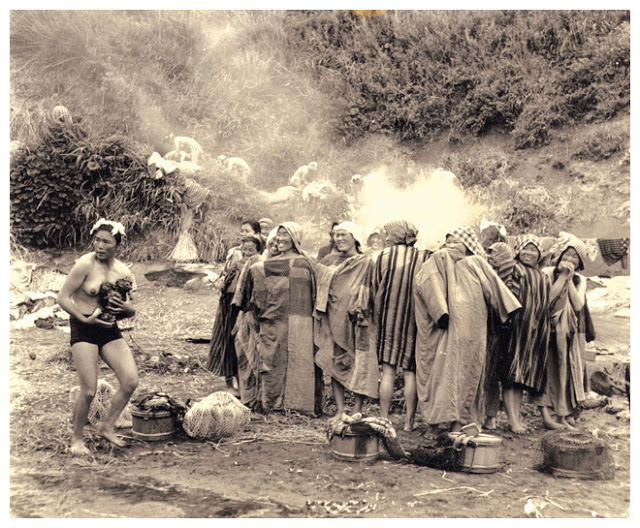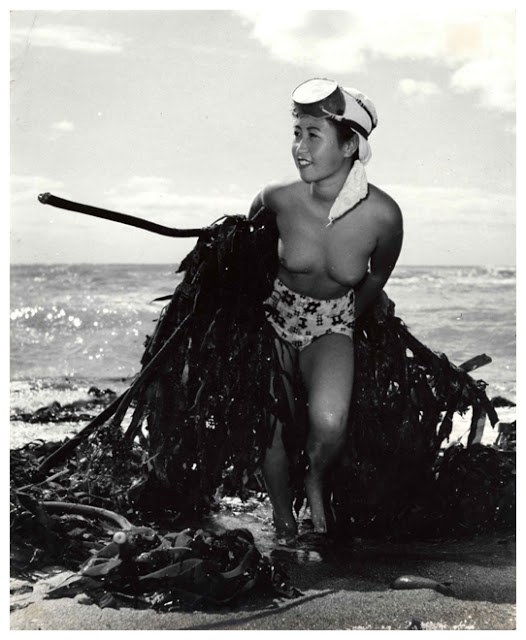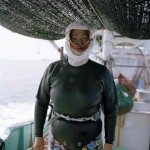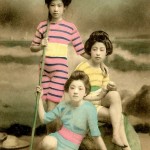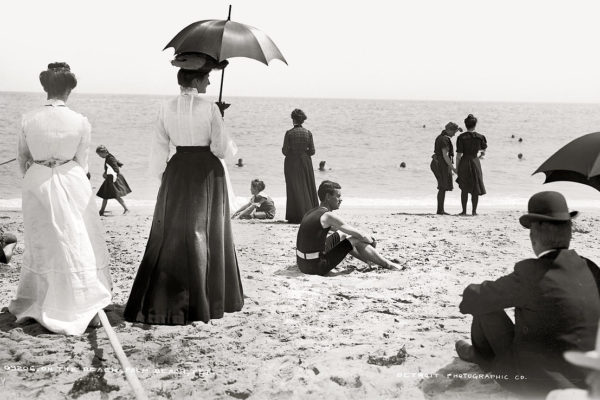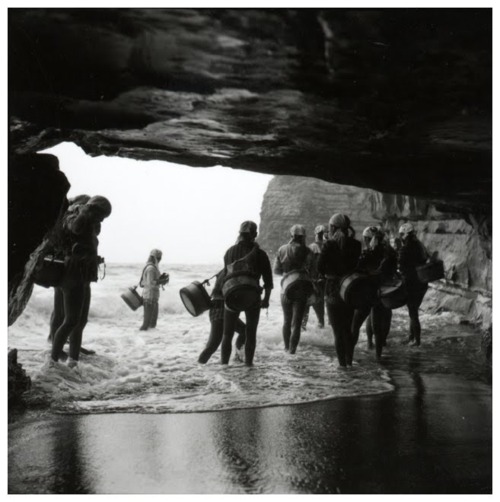
For nearly two thousand years, Japanese women living in coastal fishing villages made a remarkable livelihood hunting the ocean for oysters and abalone, a sea snail that produces pearls. They are known as Ama, and if you’ve dipped into Messy Nessy’s archives, you will have already met the few ladies still left in Japan that still make their living (well into their 90s) by filling their lungs with air and diving for long periods of time deep into the Pacific ocean, with nothing more than a mask and flippers.
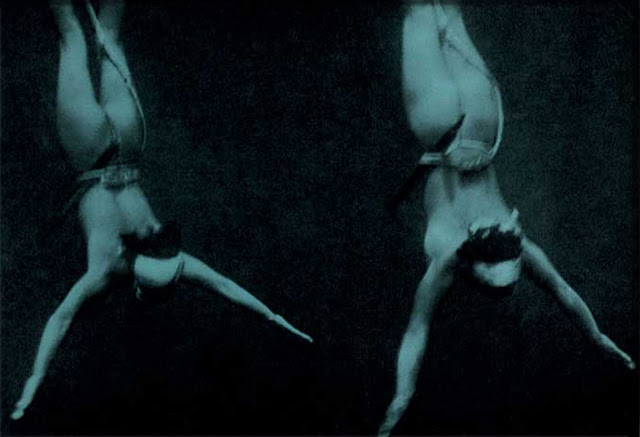
In the mid 20th century, Iwase Yoshiyuki returned to the fishing village where he grew up and photographed these women when the unusual profession was still very much alive. After graduating from law school, Yoshiyuki had been given an early Kodak camera and found himself drawn to the ancient tradition of the ama divers (ama means “woman of the sea”) in his hometown. His photographs are thought to be the only comprehensive documentation of the near-extinct tradition in existence.
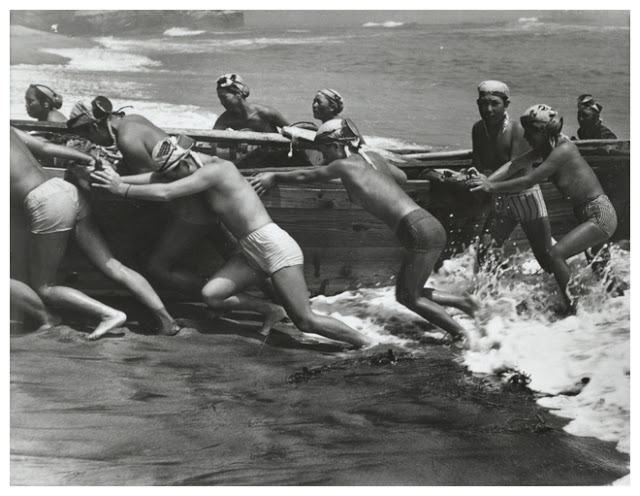
The young women, some just girls, who also harvested seaweed and turban shells in addition to the more prosperous pearl-bearing abalone, would dive in often freezing waters, for 2 minutes at a time and come up to breathe for just barely a few seconds. They would do this up to 60 times in a single diving session, up to three times a day. As women, they were believed to be better suited for the task because of an extra insulating layer of fat on the female body that allowed them to hold their breath longer than the men. With this advantage, they could also make more money in a single diving season than most of the men in their village would make in a year.
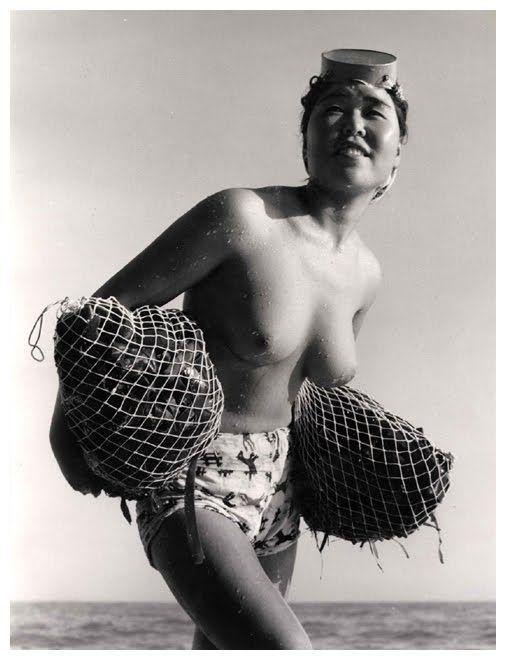
By now however, you might be wondering why you’re seeing so many naked ladies. The modern wetsuit did not become available until the late 1950s and the cotton costumes available were uncomfortable for the women when wet and made them feel much colder when out of the water than if they wore nothing. A naked body will soon dry through its own body heat, but wet clothing will keep the body wet, take far longer to dry and will feel very cold in the slightest wind. Most Ama took to diving in nothing more than a tiny loincloth and mask.
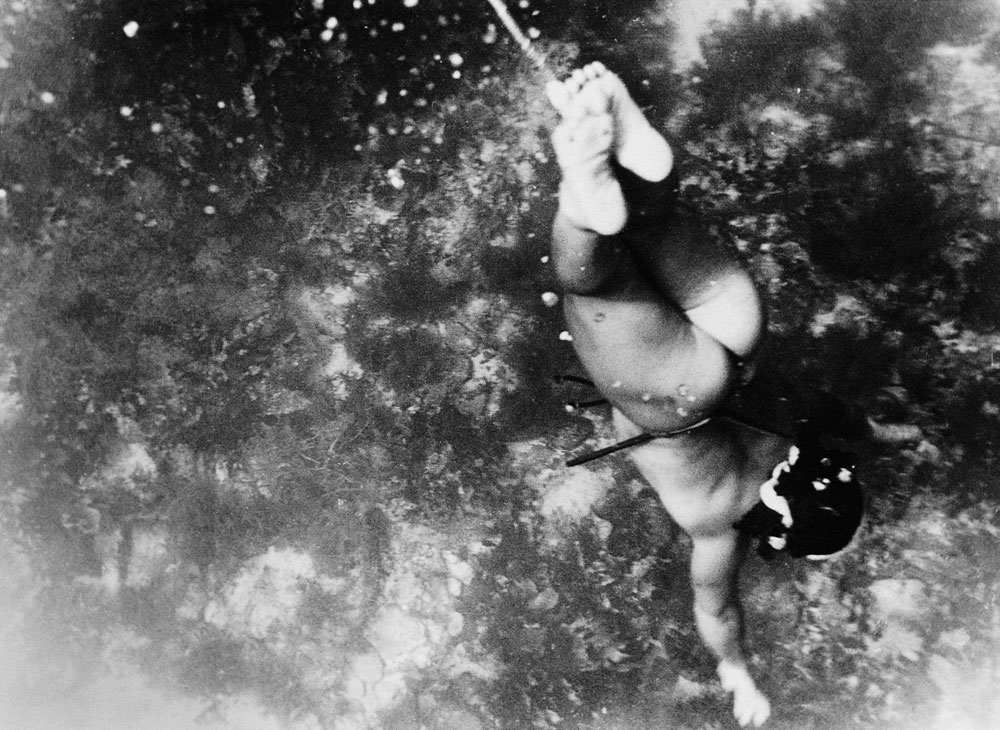
After the Second World War however, as tourism in Japan grew, outsiders began to comment on their nakedness and Ama divers were eventually forced to cover-up in a white diving costume. But here, Yoshiyuki captured the last precious moments of a tradition that would soon begin to disappear, “the simple, even primitive beauty of the Ama.”
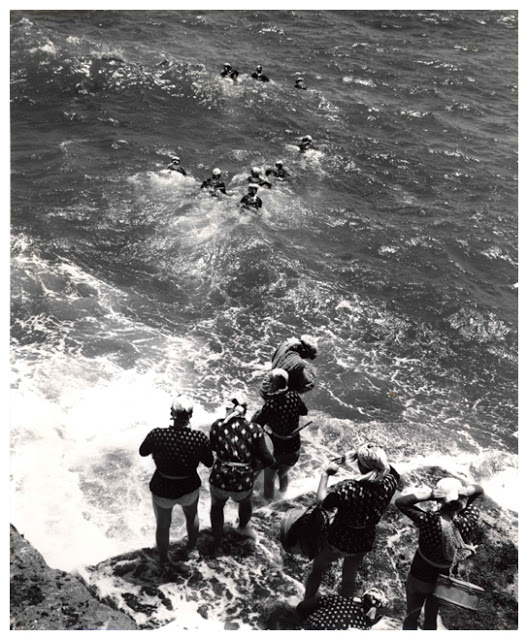
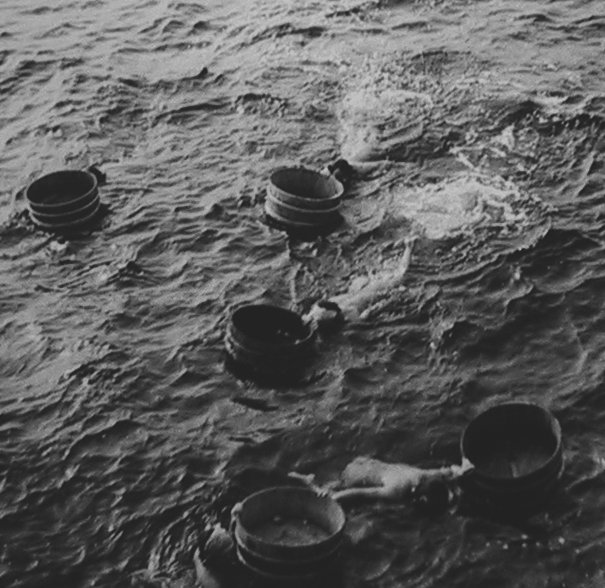
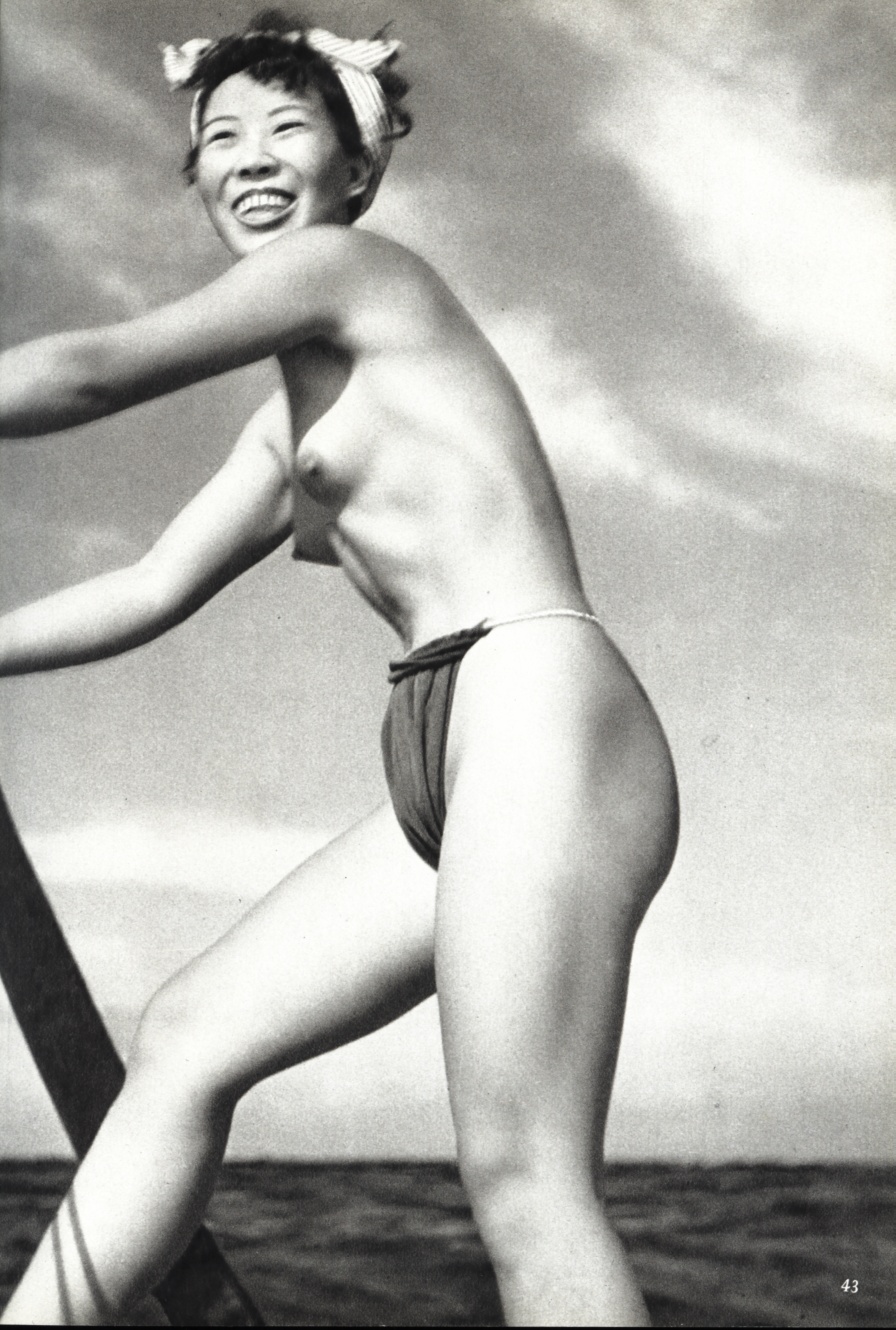
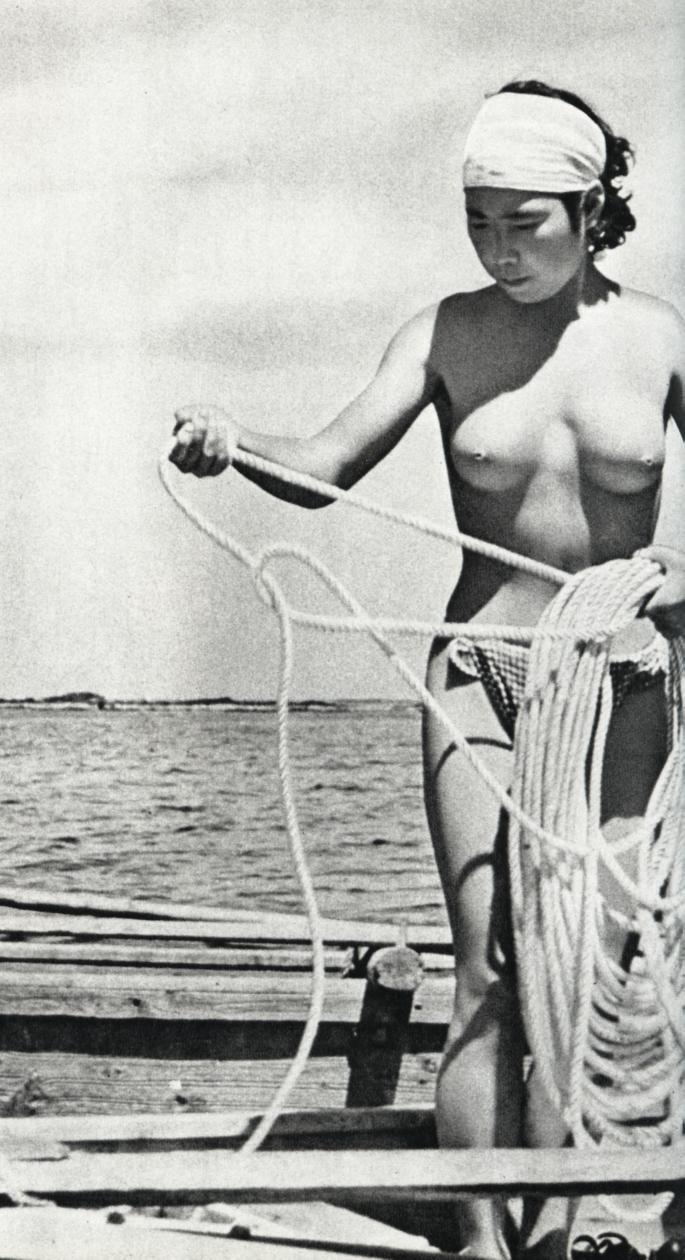
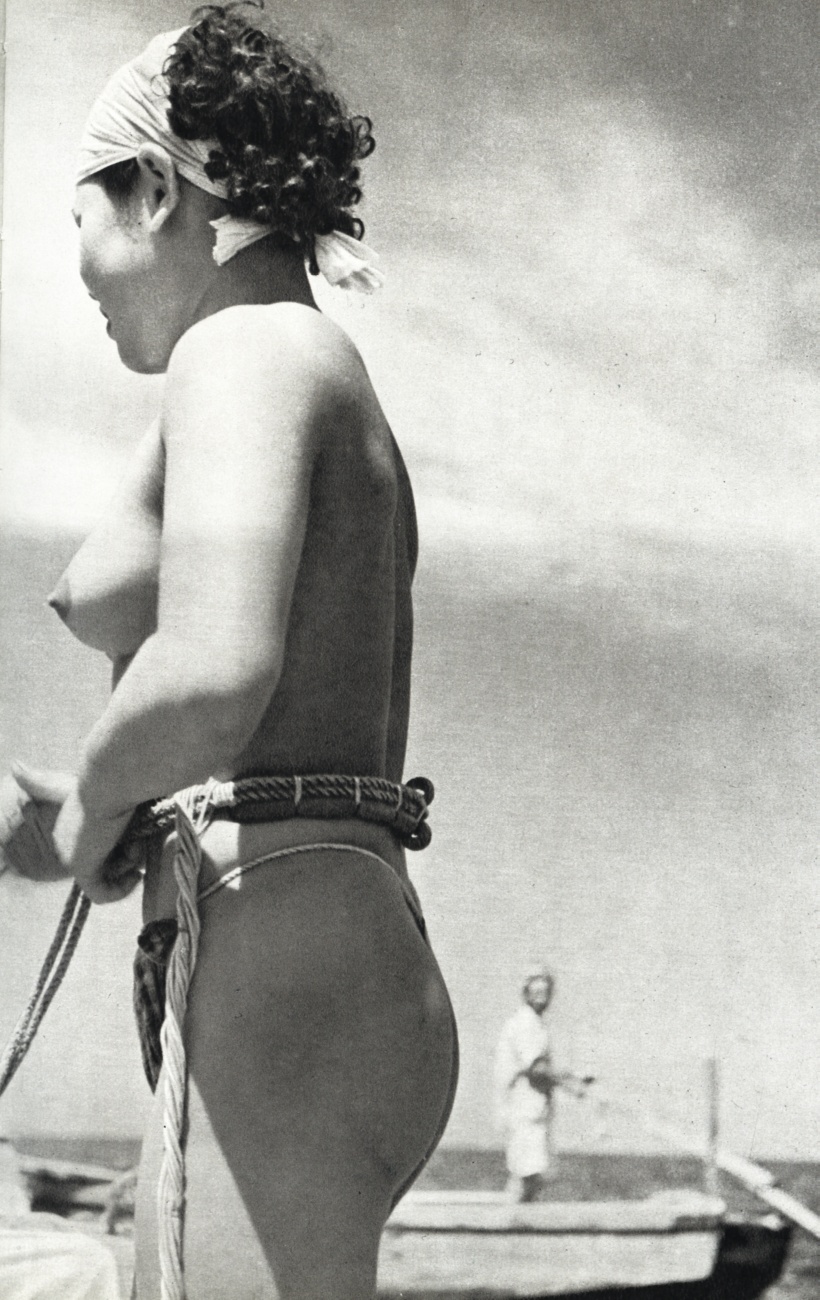
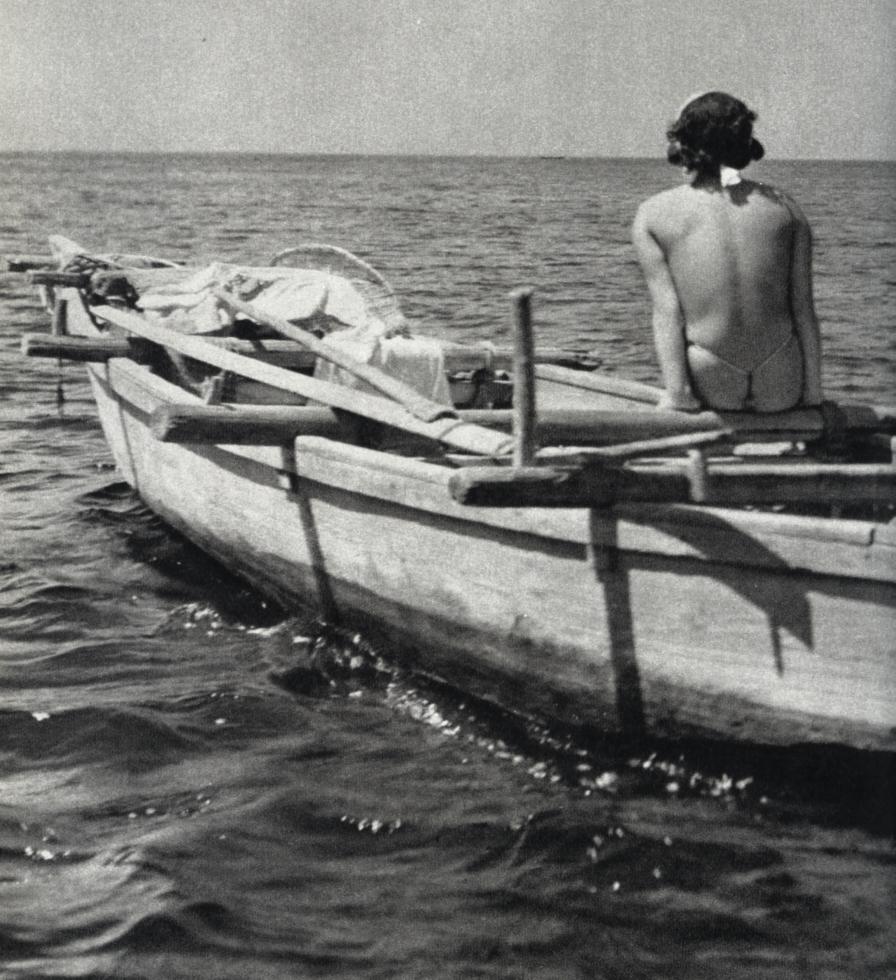
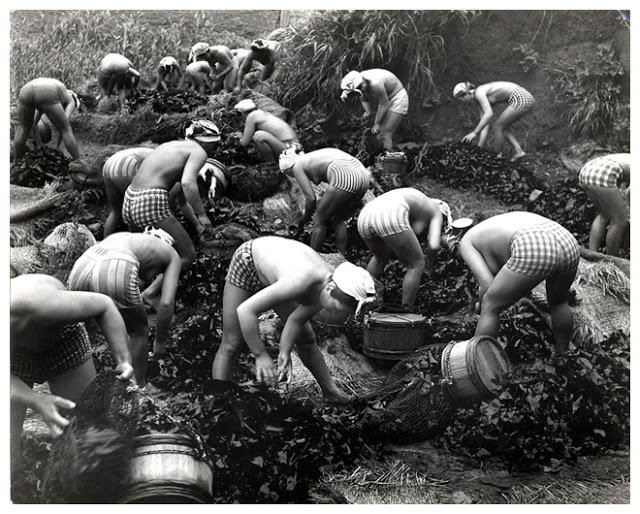
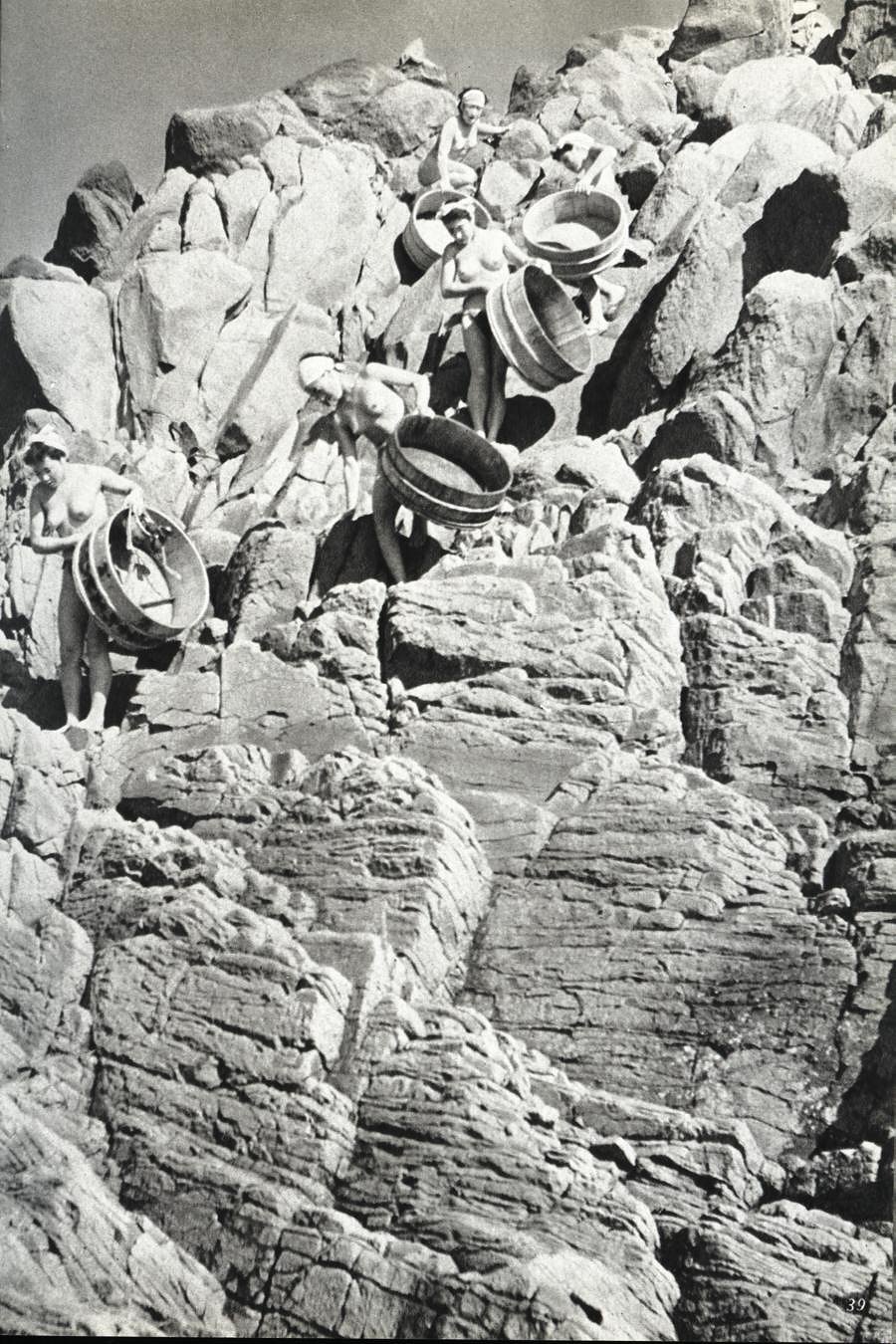
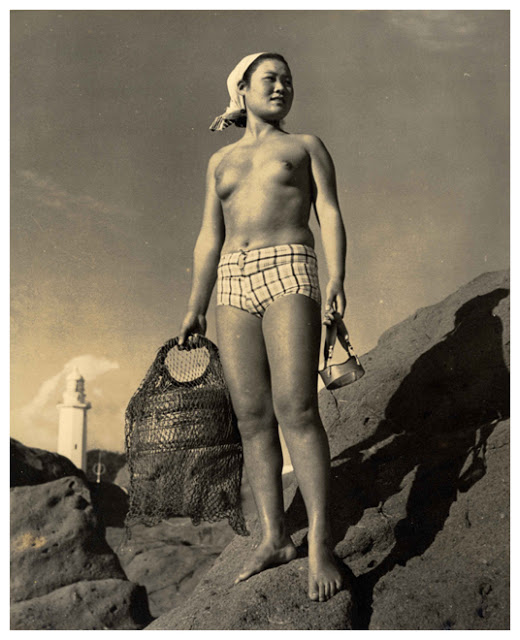
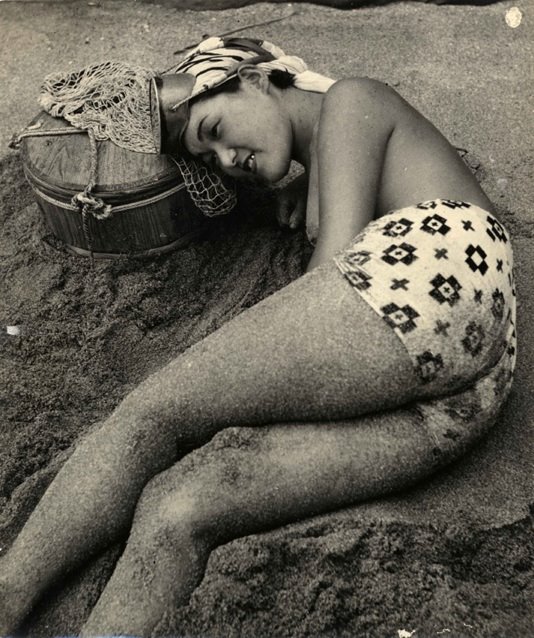
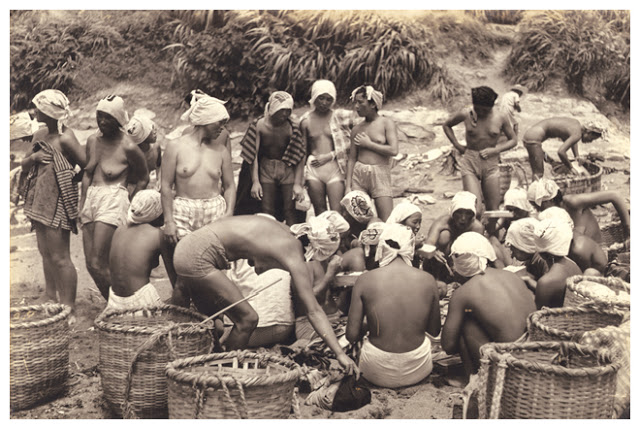
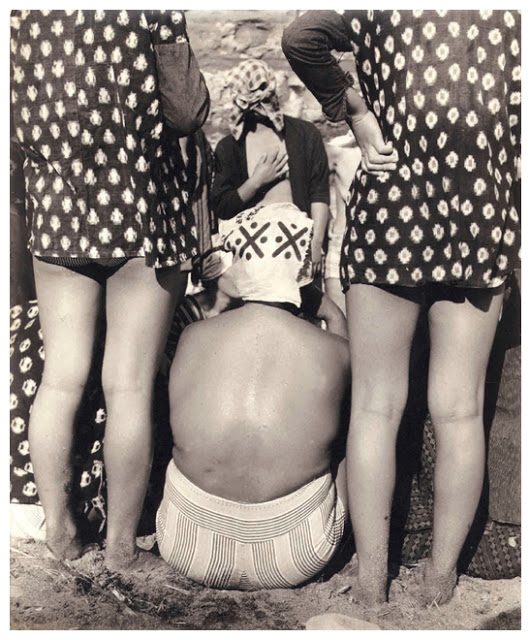
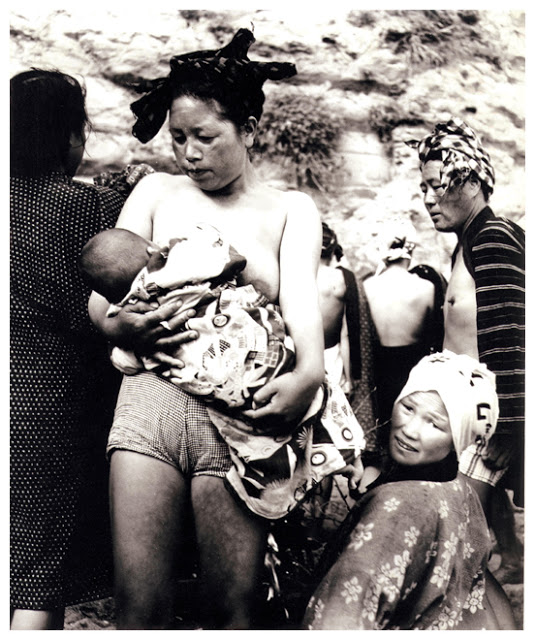
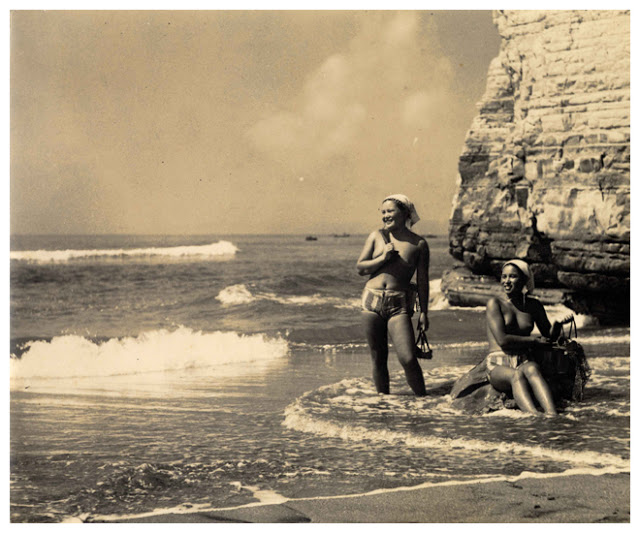
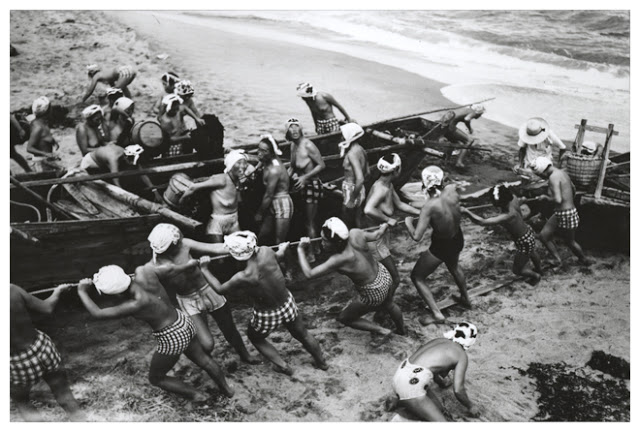
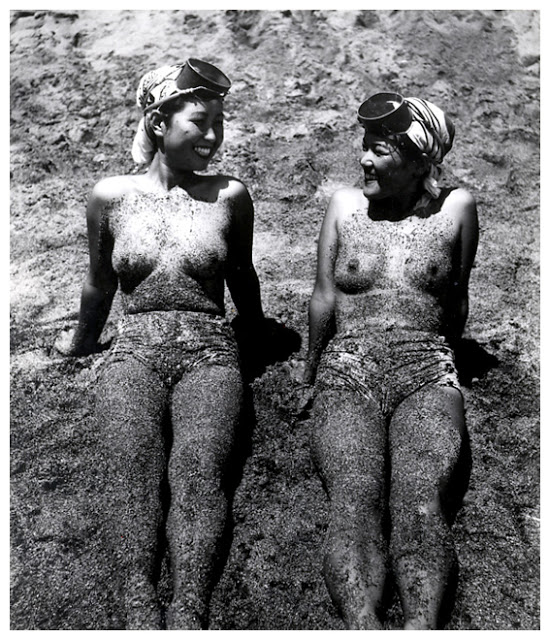
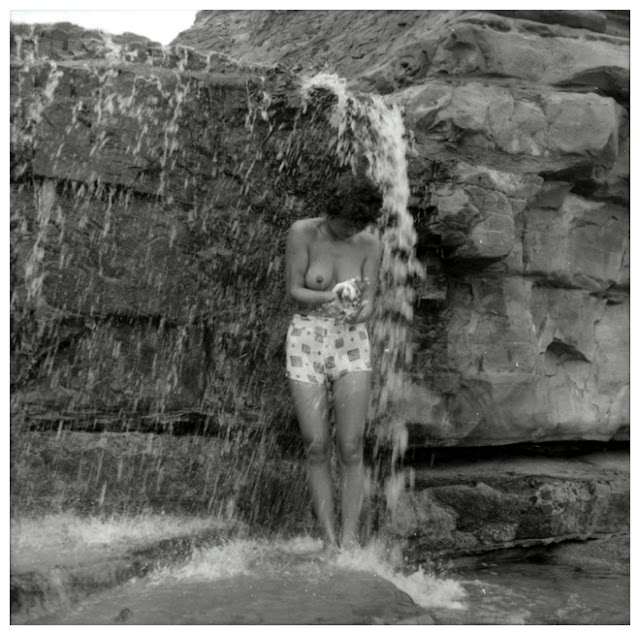
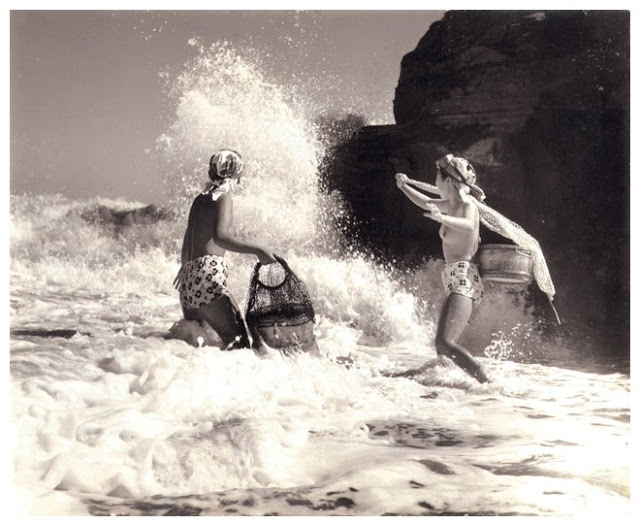
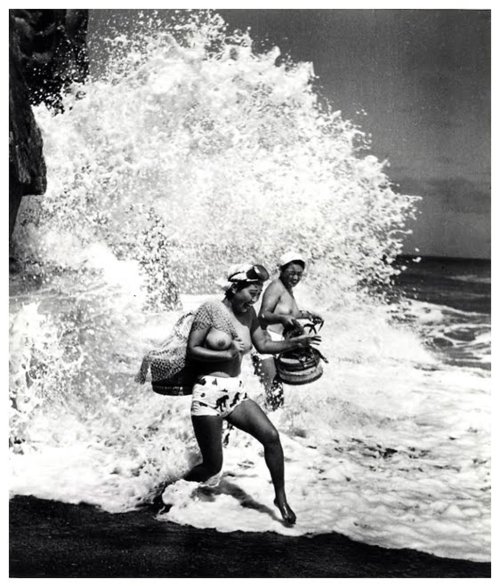
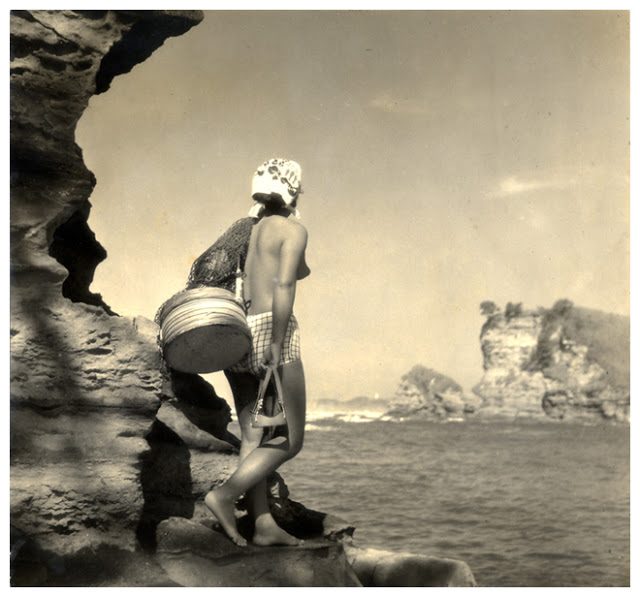
Faced with the opportunity of motherhood and legal issues around fishing licenses stating that fishing must stay within particular communities, the ama women are having to decide whether to keep working or to start a family. Modern life poses a predicament for the rare number of ama women left, and soon we will only be able to tell the story of these women and their admirable capabilities and courage..
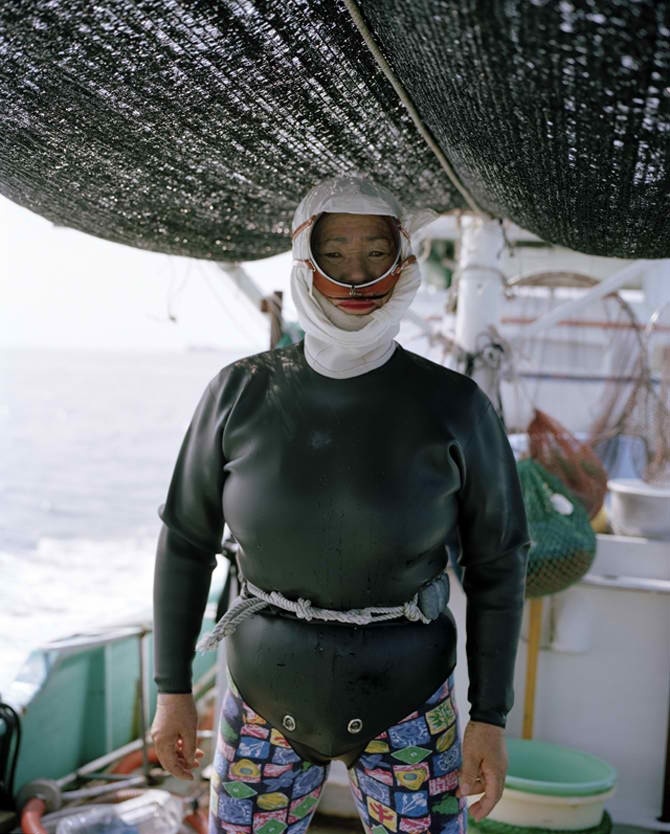
German photographer Nina Poppe, spent several weeks on the Pacific coast of Japan in the small fishing communities where the ama live in an attempt to photograph and immortalize these women before they disappear. The ancient art of Ama will soon breathe its last breathe and a forgotten breed of super women will be just another local legend.
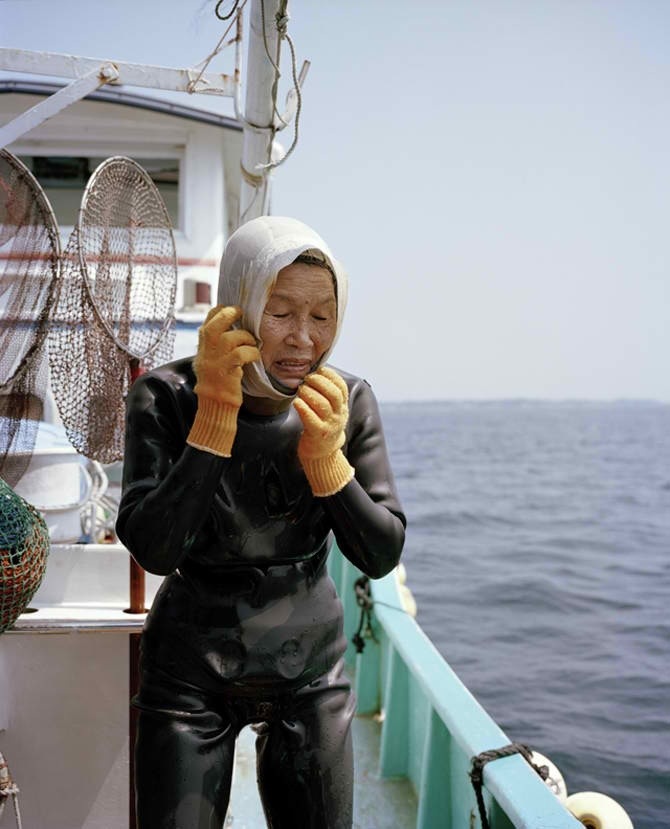
Here, in a scene from the 1985 Japanese film, Tampopo, a gangster happens upon an Ama diver…
Photos via Anthony Luke’s Not just another PhotoBlog, additional updated photos by Fosco Maraini found on Live Journal.
-
PS. Discover my own visual cabinet of curiosities for the undiscovered and forgotten on my Instagram


